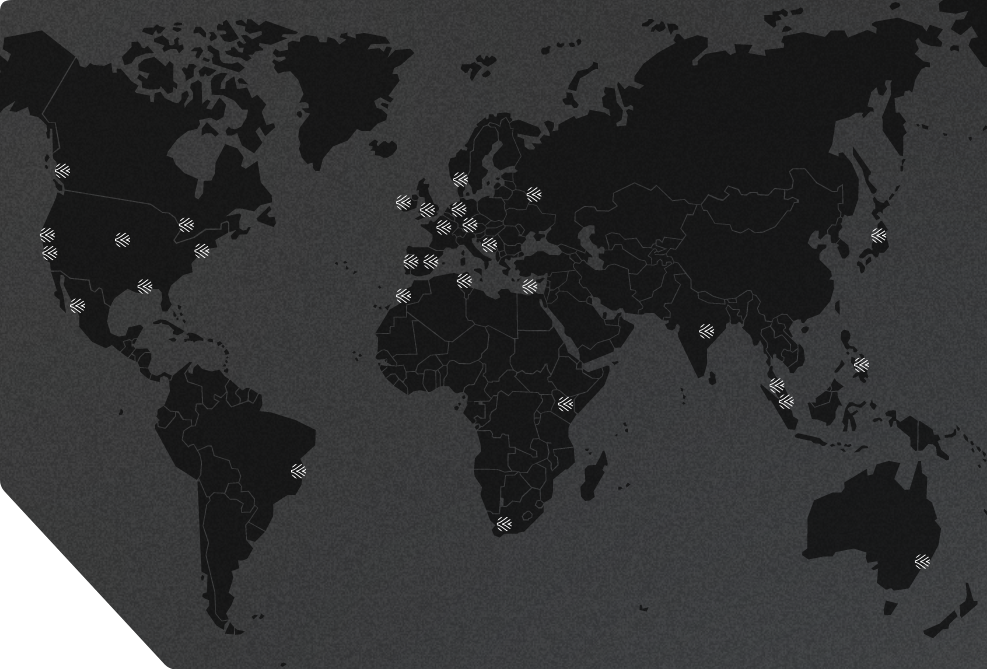What is an RPO and why Embedded is the future
- Share on LinkedIn
- Share on Twitter
- Copy link Copied to clipboard

What is an RPO and why Embedded is the future

What is an RPO and why Embedded is the future
What is the difference between Embedded & RPO
The talent industry has seen constant change over the past 10-15 years. From a huge reliance on expensive agencies, to scaling in-house teams, to the RPO model most organisations have in place today; we’ve continued to flex, adapt and meet evolving needs.
The one constant has been the need to find better balance between internal ownership and external support to help scale fast. As an industry, we haven’t quite nailed it… yet.
So, why do things need to change now?
Candidate expectations have shifted dramatically. A staggering 80% of candidates now drop out during the application process, according to Glassdoor.
In a 2021 survey, they also found that 77% of respondents considered a company’s culture before applying for a job, and 56% said culture is more important than salary. That was before Covid hit. Since then, we’ve seen The Great Resignation and more people than ever reevaluating their career choices.
If you’re going to scale fast and retain the best talent once you’ve hired them, you need to be hyper aware of this.
Add to that the impact of an impending global recession and it’s not a pretty picture. Internal teams are going to be under increasing pressure to deliver or be put at risk. Huge fixed overheads and operational costs means talent teams are some of the first to get slashed in a round of layoffs.
In brief: candidates expect more, internal teams are under pressure – and nobody can afford to f*ck this up.
Let’s look at why the RPO model doesn’t work
When you engage an RPO, you tend to get a couple of account managers who will become your main point of contact. They’ll work with you to understand the roles you’re hiring for and fire off requests to a team of outsourced talent partners who manage the candidate experience for you.
Your employer brand, culture and values (all of the things we know are important to candidates) aren’t accurately presented to candidates because the people speaking to them don’t directly engage with, or truly understand, your business.
Talent partners are paid a lower base salary and rely on commission from placing candidates so they’re also motivated by the wrong thing. If you financially reward someone for hiring bums on seats, that’s exactly what you’ll get.
And what happens when your new hire decides after Four months that your business isn’t what they were led to believe it would be during the recruitment process? You’re back to square one and the talent partner’s cashing in on another hire – earning a second lot of commission for placing a new candidate in the exact same role.
To make sure people don’t think we are completely bias the RPO model isn’t completely broken. It’s great if you’re hiring high volume, low skill level roles (think call centre/customer support). But when you’re hiring at hyper-scale in niche ecosystems, low-level resource throwing sh*t into an ATS and hoping some of it sticks just isn’t going to cut it.
How is an embedded model different?
To hire the best candidates, you need a strategy. An enticing employer brand and value proposition. An excellent data capability. A compelling story about who you are, what you stand for, where you’re heading and what a career in your organisation will feel like.
Most importantly, the people hiring need to have a deep understanding of all of this and the experience to know where and how to attract the best talent.
This is where the embedded model comes in.
Talent partners physically join your business, working alongside your team and fully immersing themselves into your culture.
They don’t earn commission on placements, so pitching a role to as many people as possible in the hope that the right person will bite isn’t on their agenda. You’re paying for their time rather than the number of hires they make, so they’re much more motivated to do the right thing for you.
The biggest difference though is in the calibre of the team: embedded talent partners are highly experienced so they’re capable of supporting you with much more than candidate attraction. They can help shape your hiring strategy, develop your value proposition, embed more efficient tools and processes across your team, and manage the end-to-end process for you.
The biggest benefits of the embedded model are:
1. The best possible talent
Hired by people who’ve actually experienced your culture for themselves
2. More bang for your buck
The model drives a 30% -50% cost saving. We saved copper.co £1.4 million in a year, while doubling their headcount and hitting $3bn value unicorn status.
3. Sustainable hiring at scale
The model put maximum focus on hiring the right people. Our partner Tokamak Energy saw a 97% retention rate on new hires whilst most companies were experiencing the worst retention rates in the history of their organisations.
4. FUlly Managed processes
Highly experienced talent partners embedded into your team can help develop and manage the end-to-end candidate experience.
What is the optimum TA operating model?
People are the most important asset of every business. You won’t find many CEO’s that disagree with that.
When you outsource your TA function you lose control of how you attract world-class people.
Outsourcing always leads to a dilution of culture and values to some level. Therefore, the team that is responsible for owning, developing and protecting the EVP, Culture, Employer brand and Values is no longer there to drive and protect the employer brand.
Ask yourself this. How have those businesses that have selected a heavy RPO TA model faired over the last few years in competitive/niche markets? … This is where you say not very well really.
When you look at these companies they have struggled to hire and/or had major retention issues because there is a diluted team in-house owning and advocating the employer brand.
Advanced in-house capability is where it’s at, and has been for some time.
Looking to the future
From our experience in building world class teams, we believe the best way to hire at pace – while protecting your business – is to have a lean, highly competent internal team of talent leaders supported by an embedded talent team that you can flex up and down as needed.
Your leaders become the custodians of your people strategy, values and culture. And they have the time to focus on those critical things because the embedded talent partners can manage more of the end-to-end hiring process
We believe in the next 5 years every company will have their own in-house capability and then have an embedded talent consultancy to work with them to plug gaps in capacity or capability to help them stay in control of their hiring and their brand.

